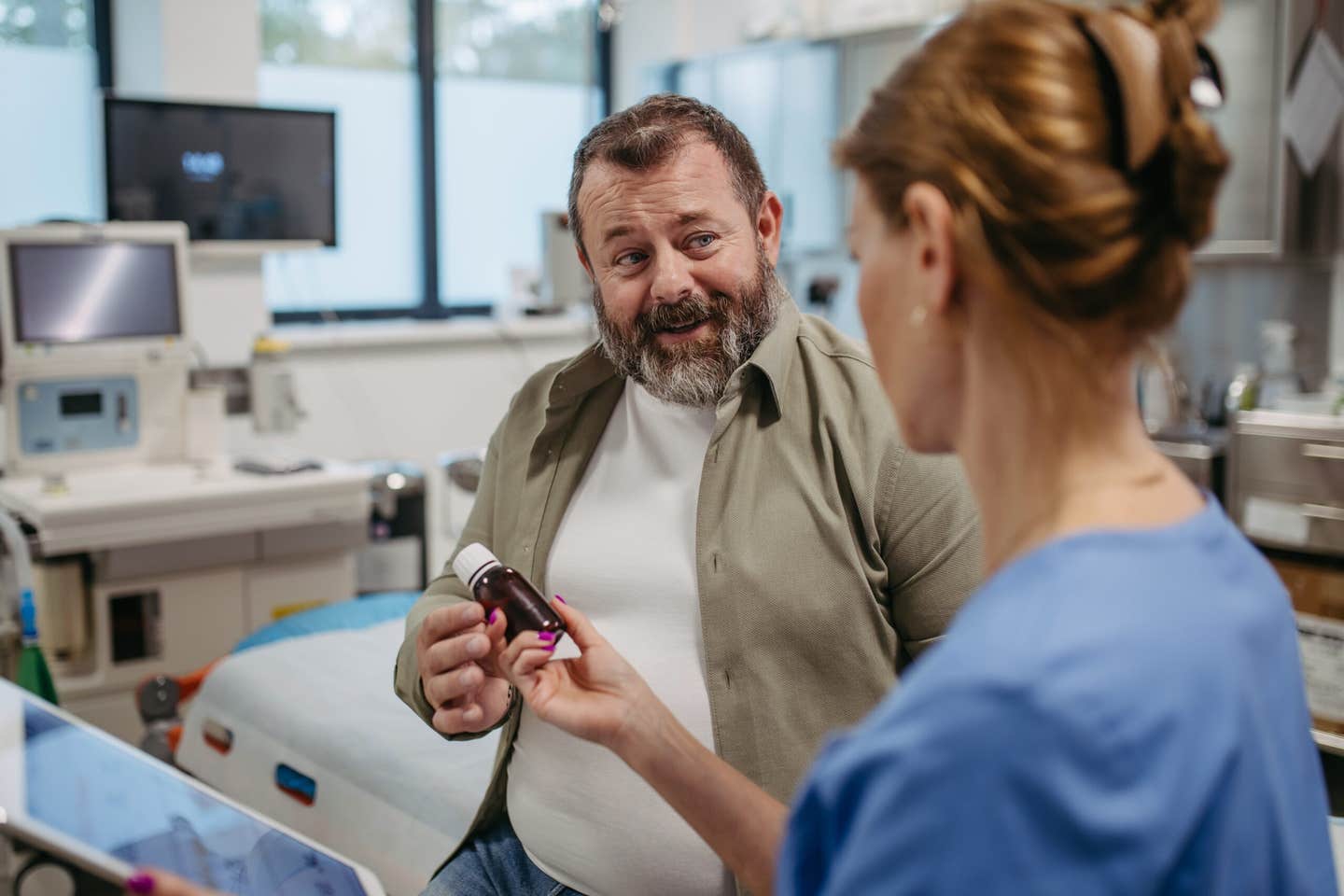Daily oral GLP-1 pill delivers strong results treating diabetes and obesity
A new daily pill called orforglipron helped adults lose weight and improve blood sugar levels in long global trials.

 Edited By: Joseph Shavit
Edited By: Joseph Shavit

Daily oral GLP-1 pill orforglipron shows strong weight loss and blood sugar gains in two major trials. (CREDIT: Shutterstock)
A growing number of people are searching for weight loss options that feel manageable in daily life. Many of the current treatments rely on injections, which can create their own challenges. Needles, storage rules, and regular clinic visits can make the process feel overwhelming.
A new oral medication called orforglipron may offer a different experience. Researchers say it helps people with obesity lose meaningful weight and improve blood sugar levels without the hurdles of injectable drugs.
How the Oral Pill Works
Orforglipron is a once-a-day pill that activates the same GLP-1 receptor targeted by widely used injectable drugs. It is designed to support insulin release, calm glucagon secretion, and help with hunger control. You can take it without planning meals around it because it does not require refrigeration or special timing. Its development marks a shift toward easier and more flexible obesity treatments.
Two major clinical studies, including a global phase 3 trial and the ATTAIN-2 study, offer the strongest picture of how the pill performs. These efforts tracked thousands of adults for more than a year. Some lived with obesity alone and others had both obesity and Type 2 diabetes. All were encouraged to follow balanced eating habits and move more, not through strict calorie limits but through simple steps like choosing more protein and fiber, limiting added sugars, and getting at least 150 minutes of activity a week.
Strong Weight Loss Results
Across a pool of 3,127 adults without diabetes, researchers saw weight fall in every dose group. People taking the lowest dose lost an average of 7.5 percent of their body weight after 72 weeks. The mid-range dose produced an 8.4 percent drop. The highest dose led to an 11.2 percent decrease.
Those on placebo lost about 2.1 percent. Many people reached deeper levels of weight loss. More than half of those on the highest dose lost at least 10 percent of their weight. About one in five lost 20 percent or more. These changes also came with healthier waist size and improvements in blood pressure, triglycerides, and cholesterol.
The ATTAIN-2 trial extended the work to adults with both obesity and Type 2 diabetes, a group that often faces slower weight loss. Researchers enrolled 1,613 adults in ten countries and raised the dose from 1 mg to as high as 36 mg over several months. After 72 weeks, weight loss averaged 5.5 percent at 6 mg, 7.8 percent at 12 mg, and 10.5 percent at 36 mg. Placebo patients lost 2.2 percent. Blood sugar levels also improved. Many participants lost around 23 pounds.
Deborah Horn, DO, MPH, of McGovern Medical School at UTHealth Houston, led the work and said the results offer hope for people who need more options. “The opportunity for an oral GLP-1 medication with highly effective weight loss that is simpler to take may provide increased access and opportunities for better health for our patients with obesity and diabetes,” she said.
She added that once the medication arrives, which is expected in 2026, it may come with a lower price than injectables. “This could position it to be the ‘metformin’ of obesity and become widely covered by insurance plans, opening the door to treatment for all,” Horn said.
Safety and Side Effects
Orforglipron brought mostly mild or moderate gastrointestinal symptoms. Between 5.3 and 10.3 percent of people in the oral drug groups stopped treatment due to side effects. A smaller share, 2.7 percent, discontinued in the placebo group. The overall safety profile looked similar to that of other GLP-1 medicines. Many participants stayed on the medication throughout the trials, which added confidence to the long study design.
Researchers believe the simpler delivery method could reshape treatment habits. A pill that stays stable at room temperature and avoids needles may feel easier to manage. It also removes supply chain complications linked to shipping injectables. That convenience may encourage more people to stay with treatment long enough to see lasting results.
Practical Implications of the Research
These studies suggest orforglipron could make effective weight loss treatment available to more people. The pill format may help those who avoid injections or struggle with weekly dosing. Lower cost and broader insurance coverage could increase access across communities.
The health gains seen in the trials, from lower blood sugar to improved cholesterol, connect directly to lower long-term risks for heart disease, diabetes complications, and other chronic illnesses.
Researchers may also use these findings to push forward a new generation of oral metabolic drugs that support daily life without extra burden.
Research findings are available online in The Lancet Journal.
Related Stories
- Weight-loss surgery outperforms GLP-1 drugs for diabetes and obesity, study finds
- Daily obesity pill Orforglipron helped adults lose up to 20% of their body weight in global trial
- FDA approved psoriasis drug could prevent Type 1 diabetes, study finds
Like these kind of feel good stories? Get The Brighter Side of News' newsletter.
Rebecca Shavit
Science & Technology Journalist | Innovation Storyteller
Based in Los Angeles, Rebecca Shavit is a dedicated science and technology journalist who writes for The Brighter Side of News, an online publication committed to highlighting positive and transformative stories from around the world. With a passion for uncovering groundbreaking discoveries and innovations, she brings to light the scientific advancements shaping a better future. Her reporting spans a wide range of topics, from cutting-edge medical breakthroughs and artificial intelligence to green technology and space exploration. With a keen ability to translate complex concepts into engaging and accessible stories, she makes science and innovation relatable to a broad audience.



